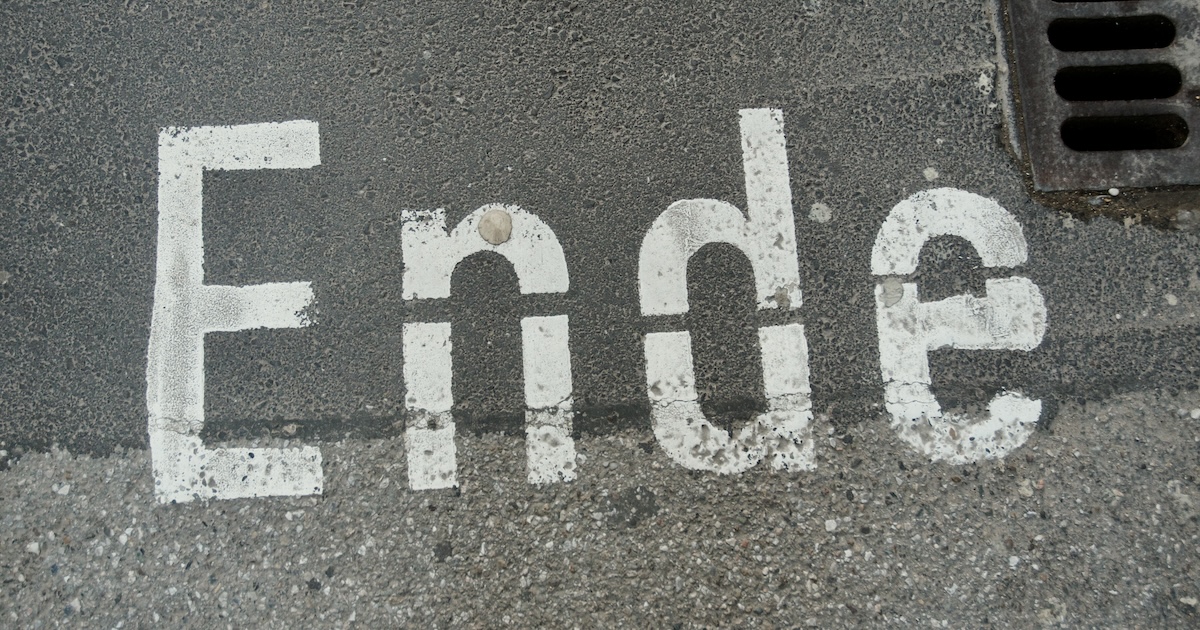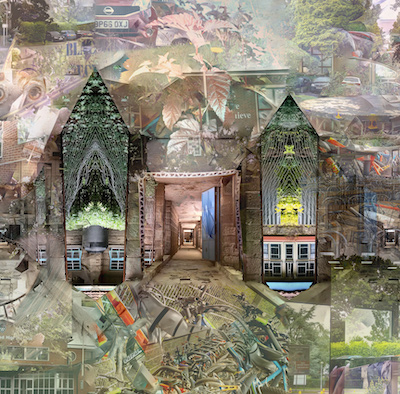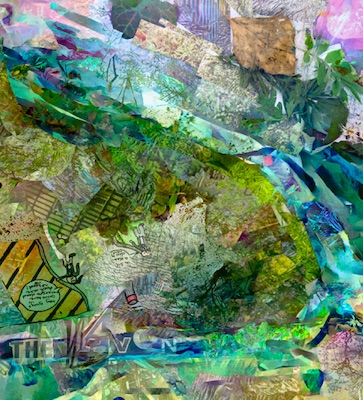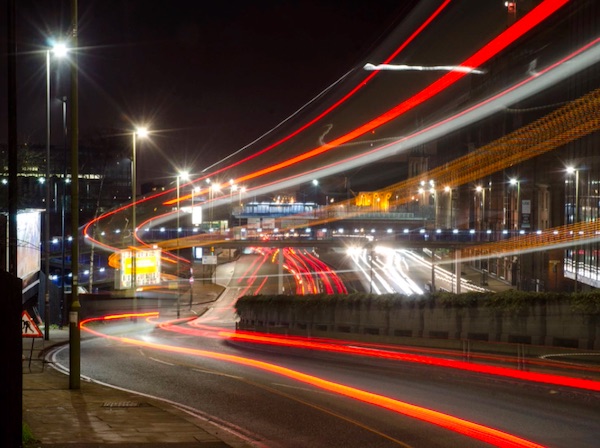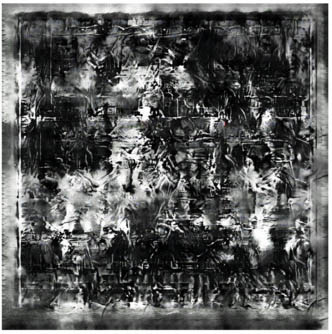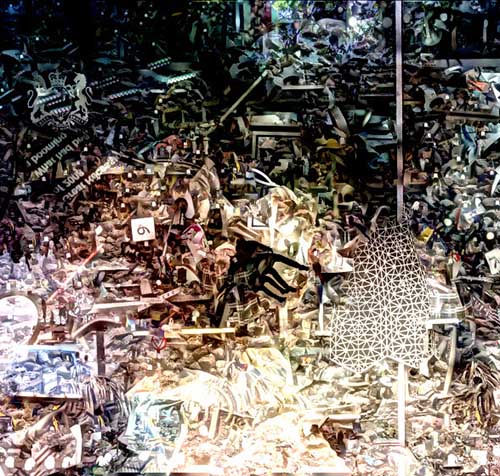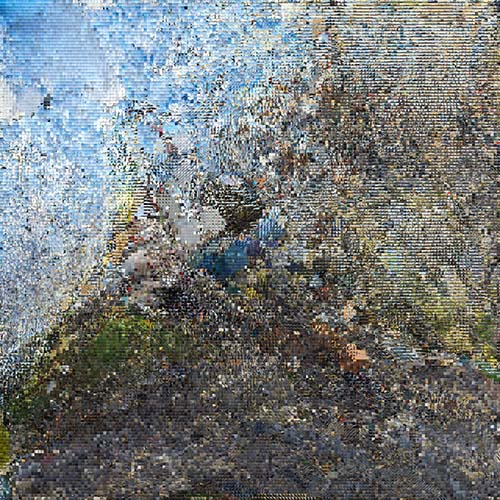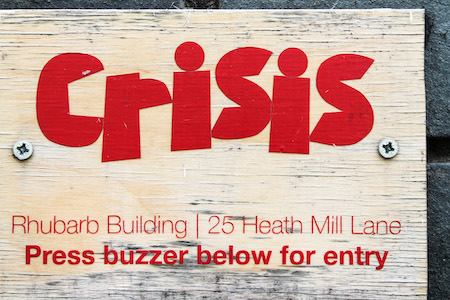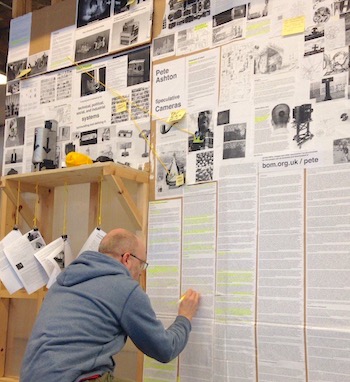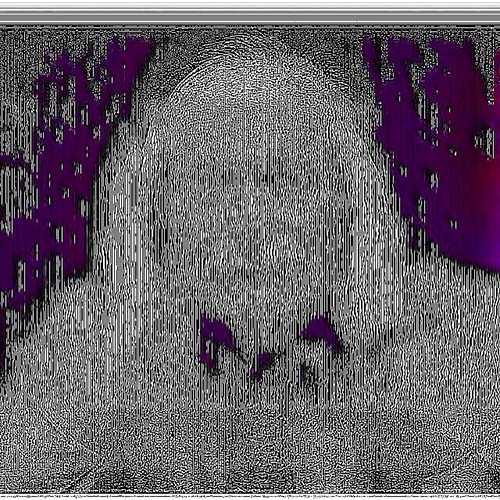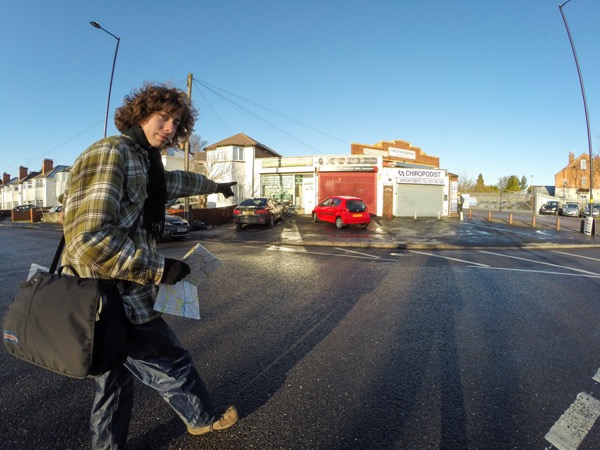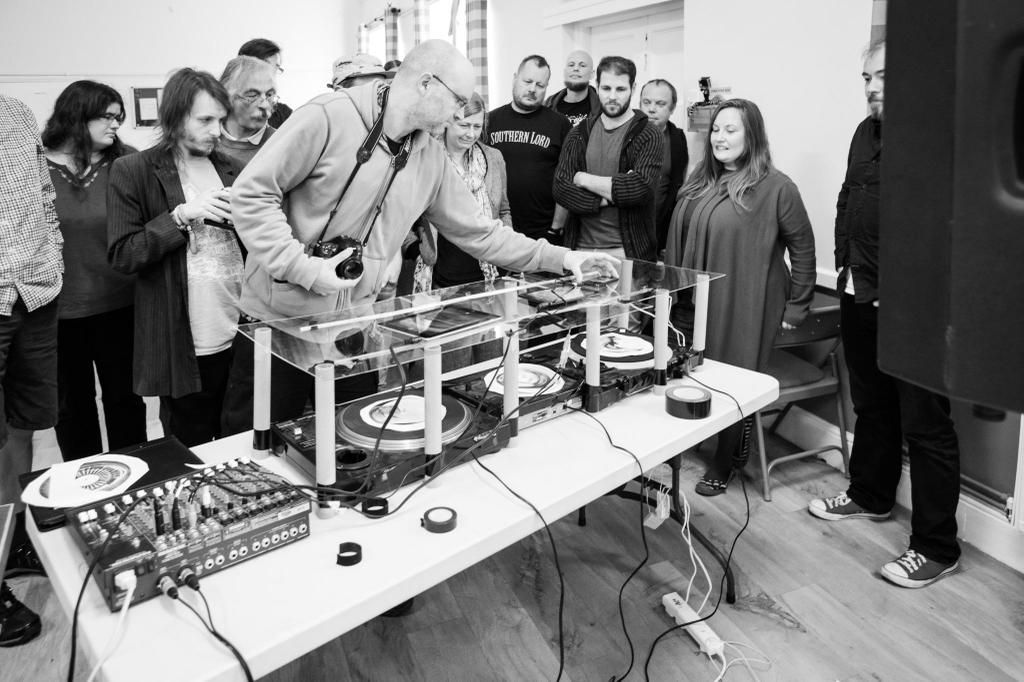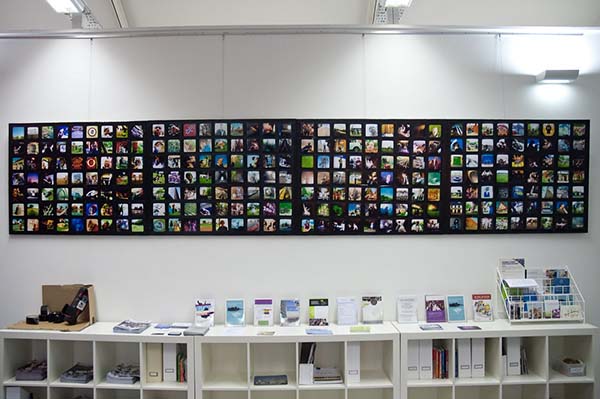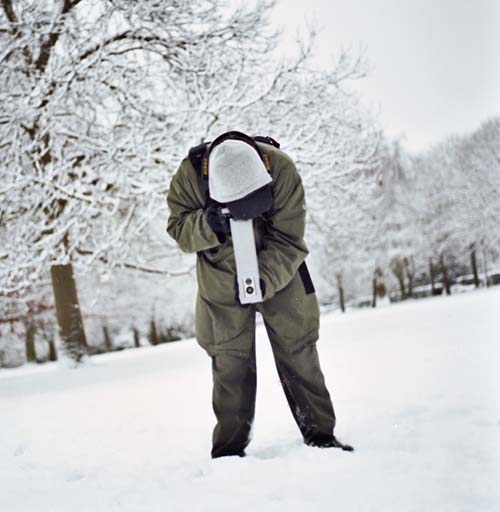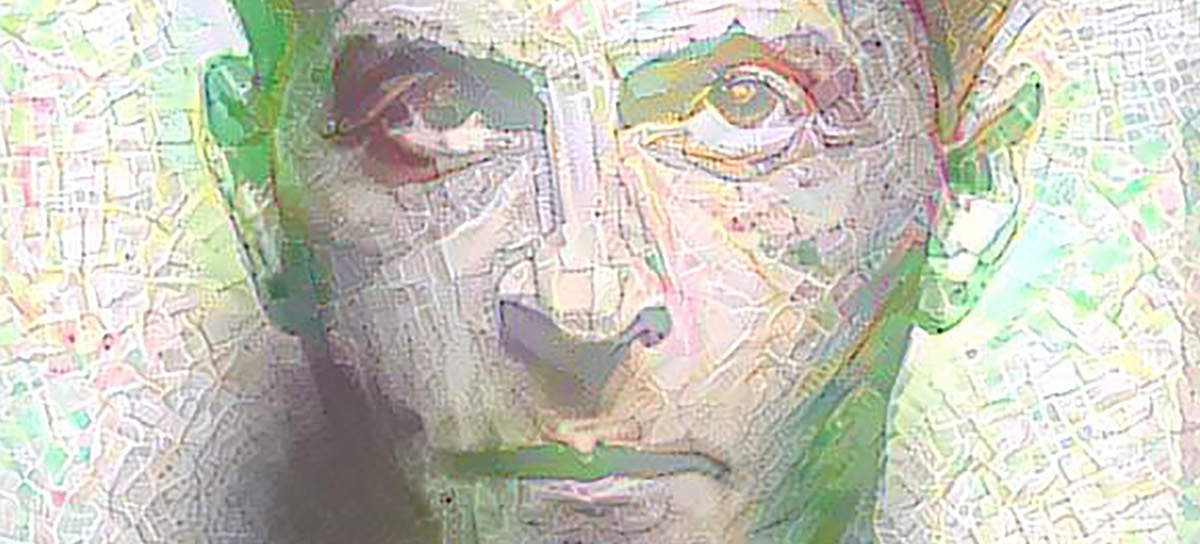
Goodbye Wittgenstein was a collaborative project between the qujOchÖ artist collective in Linz, Austria and A3 Project Space in Birmingham, UK. In November 2016, along with Trevor Pitt, Emily Warner and Mike Johnston, I was invited by A3 to join a month-long residency at Atelierhaus Salzamt, a residential studio in central Linz, to produce work responding to the philosopher Ludwig Wittgenstein’s time in Linz and Birmingham. An exhibition of our work opened on November 23rd 2016.
Wittgenstein wandelt wehmütig widriger winde wegen Wienwärts
My work started to take shape when a passage in Ray Monk’s biography of Wittgenstein caught my eye.

His poor results may in part be due to his unhappiness at school. It was the first time in his life he had lived away from the privileged environment of his family home, and he did not find it easy to find friends among his predominantly working-class fellow pupils. On first setting eyes on them he was shocked by their uncouth behaviour. ‘Mist!’ (‘Muck!’) was his initial impression. To them he seemed (as one of them later told his sister Hermine) like a being from another world. He insisted on using the polite form ‘Sie’ to address them, which served only to alienate him further. They ridiculed him by chanting an alliterative jingle that made play of his unhappiness and of the distance between him and the rest of the school: ‘Wittgenstein wandelt wehmütig widriger Winde wegen Wienwärts’ (‘Wittgenstein wends his woeful windy way towards Vienna’). In his efforts to make friends, he felt, he later said, ‘betrayed and sold’ by his schoolmates.
The effect of […] his difficulties with his classmates seems to have been to intensify the questioning and doubting nature implicit in his earlier reflections. His high marks in religious knowledge are a reflection, not only of the comparative leniency of priests compared with school teachers, but also of his own growing preoccupation with fundamental questions. His intellectual development during his time at Linz owed far more to the impetus of these doubts than to anything he may have been taught at school.
Ray Monk, Ludwig Wittgenstein: The Duty of Genius
During my residency I used this taunt, Wittgenstein wandelt wehmütig widriger winde wegen Wienwärts, as my prompt to explore Linz. Finding the direction of Vienna from the Realschule on Steingasse I drew a map on my studio wall.
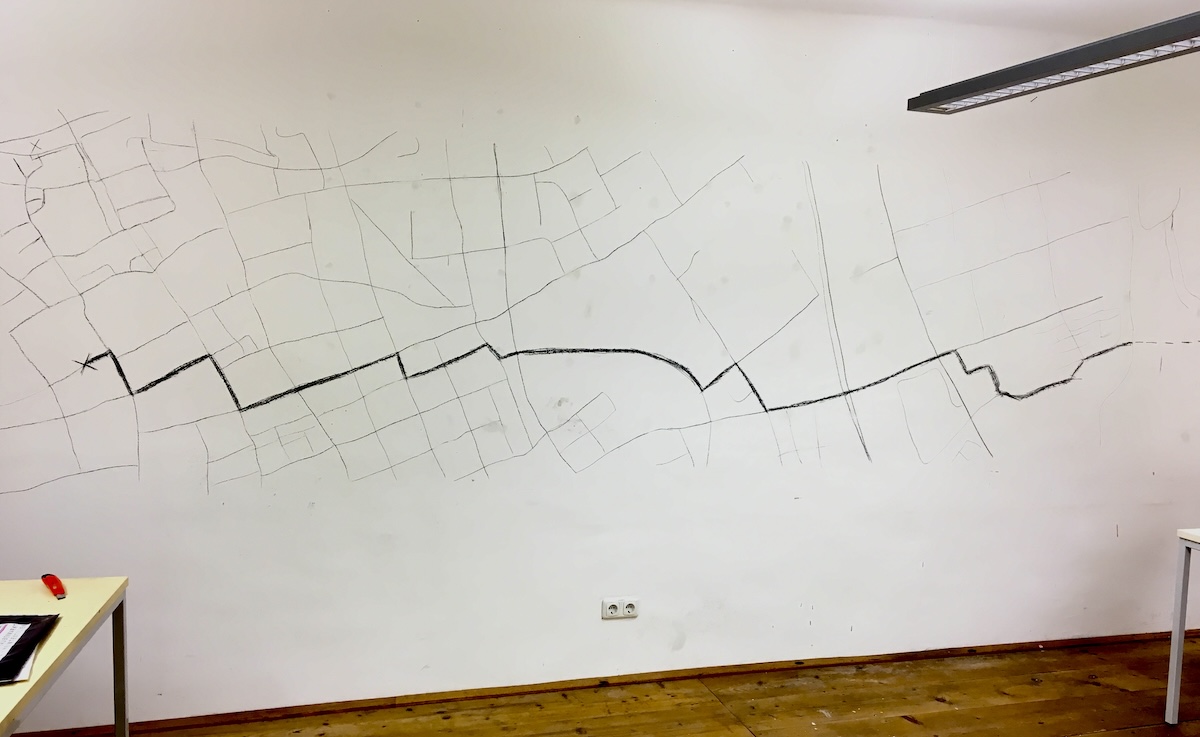
I then spent a day walking the route through historic, residential, municipal and industrial Linz, taking photos of whatever caught my eye until finally hitting the floodplains of the Danube.
With this as my raw material I started making work for the show at the end of the residency.
The Exhibition
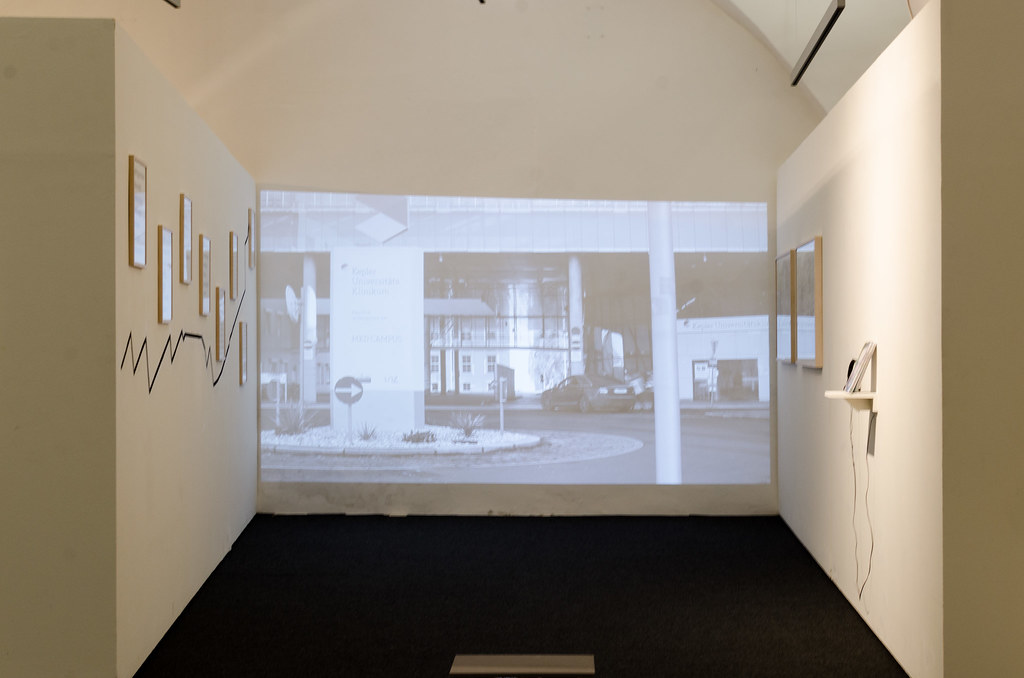
The work in the exhibition, across three walls, showcases my various attempts to represent this journey, informed by discussions with my fellow artists and my own reading about Wittgenstein’s time in Linz.
On the left wall is a black line tracing the route walked from Steingasse to the Danube. The schoolyard taunt is framed at the location of the school and as we move away it is translated to English (correctly and badly), ASCII, hexadecimal, octal and finally the pure logic of binary.
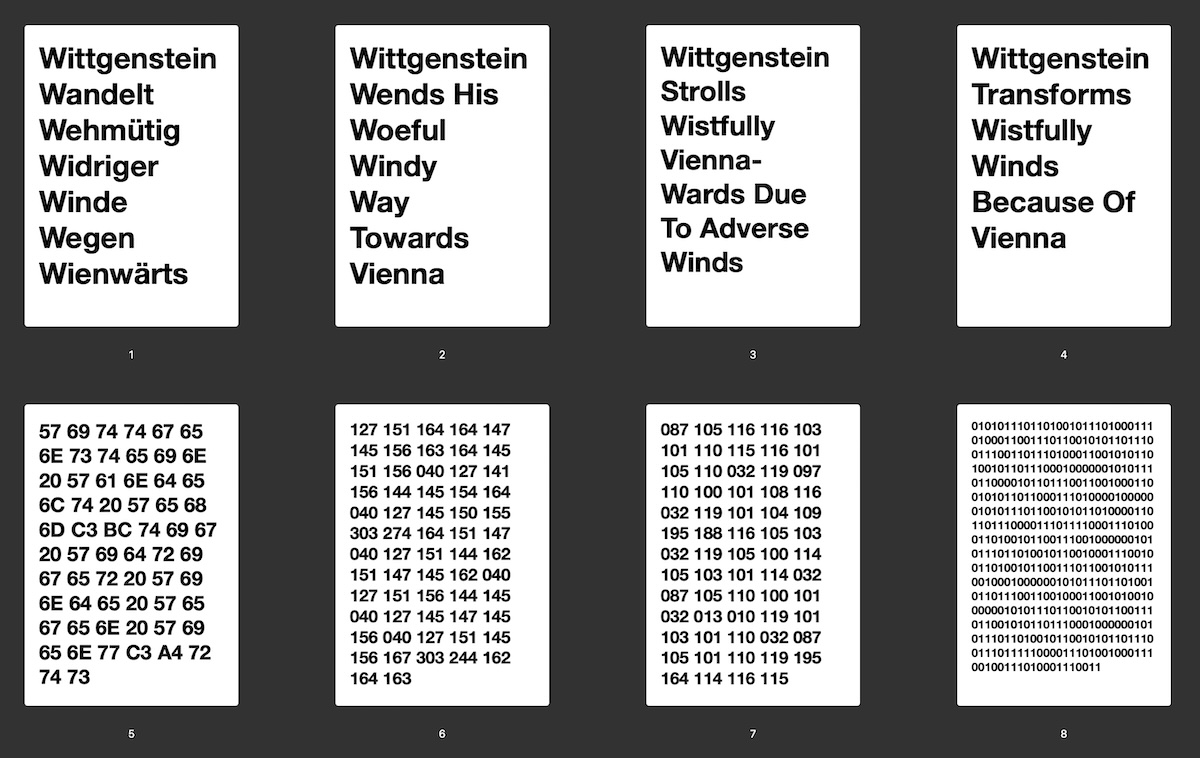
In the centre is a large video projection of one-minute static video recordings from 36 locations along the route. The early scenes are busy and defocussed, leading to calmer, sharper scenes through the industrial areas (farmlands in Wittgenstein’s day) until reaching the river.
On the right wall are two algorithmic works.
The first is an automatic merging of 86 photographs taken during walks along the route on November 9th, along with a charcoal rendering.
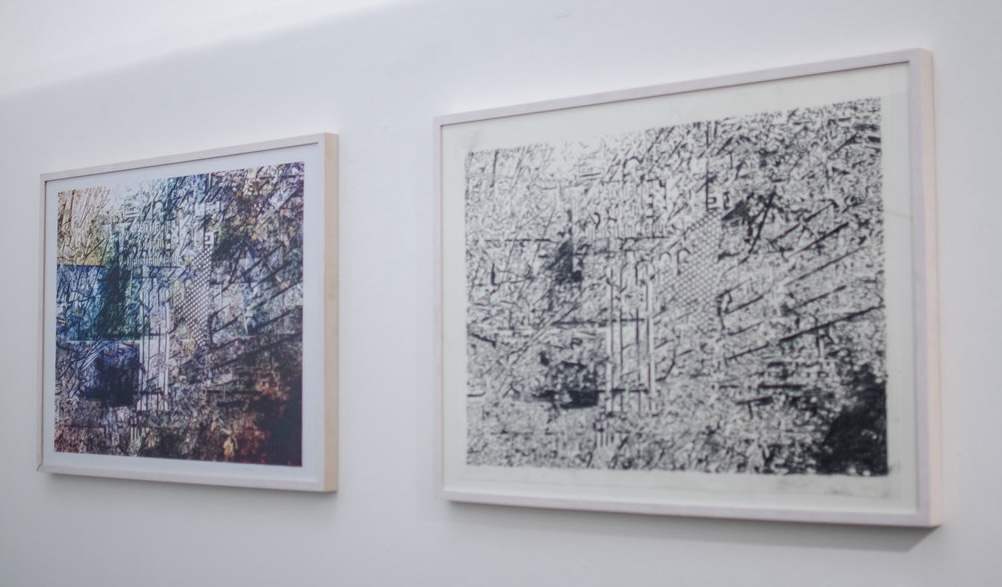
The digital image is authored by Photoshop’s Auto Blend algorithm, a tool designed for focus-stacking and panorama stitching but used here on wildly differing images. The algorithm looks for the sharpest, boldest areas of the photos and combines them into a visually chaotic but mathematically ordered image.

The charcoal rendering is produced by hand-tracing the projected digital image (video recording of the process) in the manner of a mechanical plotter or printer, submitting human creativity to the rule of the machine. Errors in the rendering are the result of glitches in the human-machine interface. Both these works are experiments in post-photographic realisations of camera-captured data.

Next to this is a hardcover publication of text generated with the torch-rnn neural network trained on Wittgenstein’s extant writings, seeded with the childhood taunt, creating an ersatz text using mathematical logic. The process is similar to the predictive text system on smartphones and has produced prose which, while utterly nonsensical, evokes the rhythm and feel of Wittgenstein’s original work.

An audio recording of Apple’s VoiceOver accessibility system reading the text as if it were German increases the nonsense quotient and references qujOchÖ’s Meaning of Dictation from the original Goodbye Wittgenstien project in Birmingham.
Exhibition documentation photographs
All photos from the group exhibition are in this Flickr set.
All photos of my work and process are in this Flickr set.
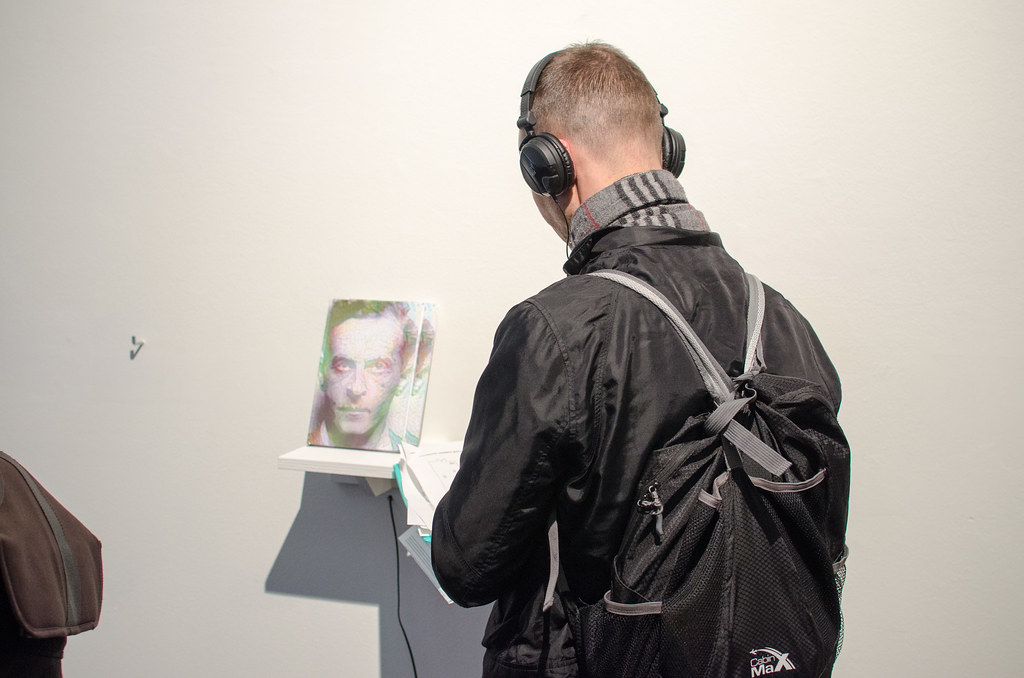

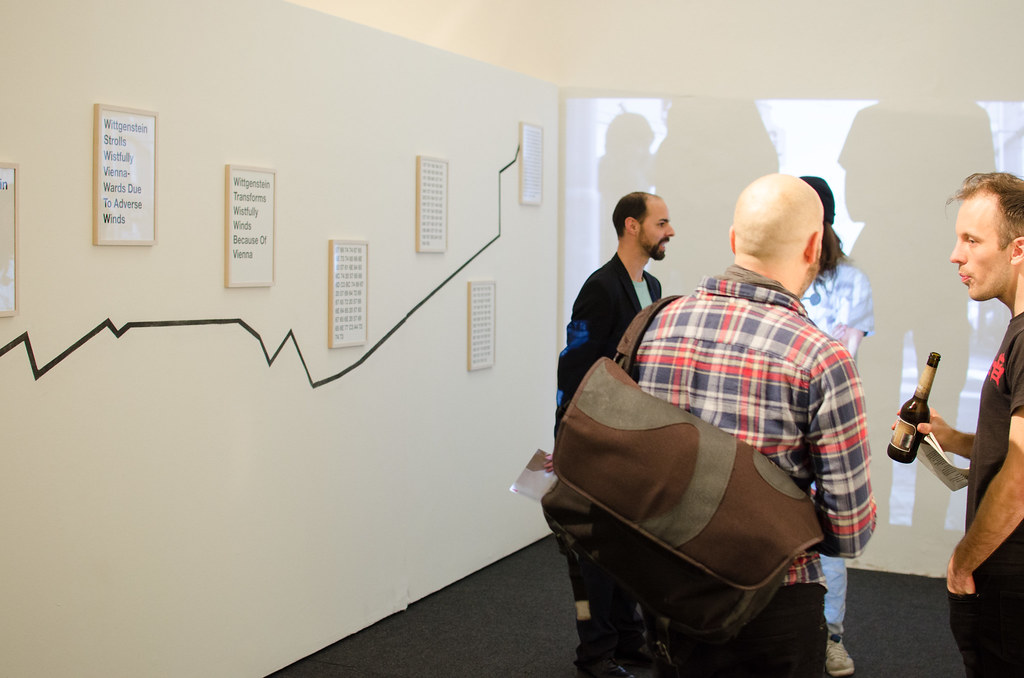
Reflections on the residency, eight years on
To come.
